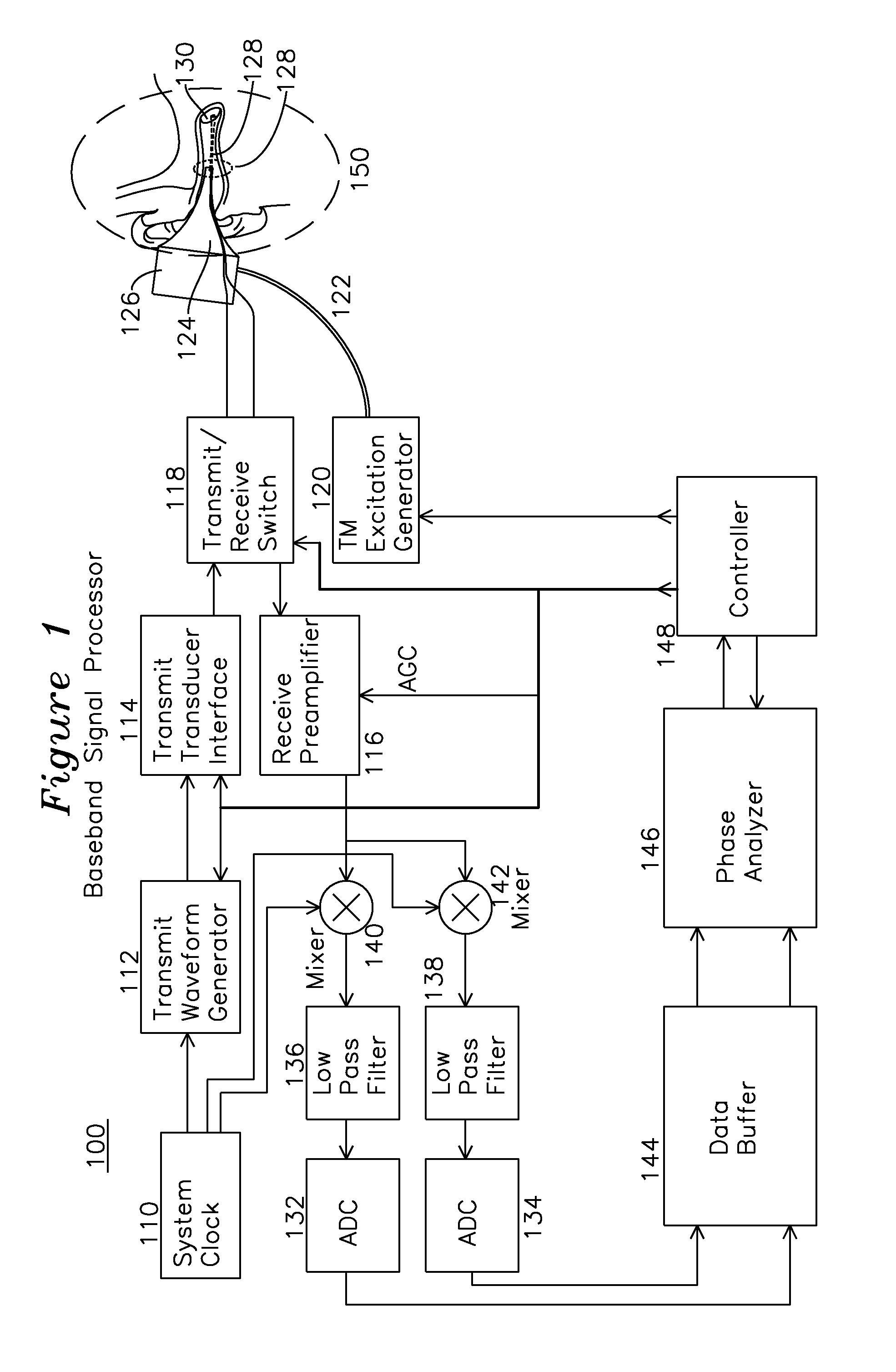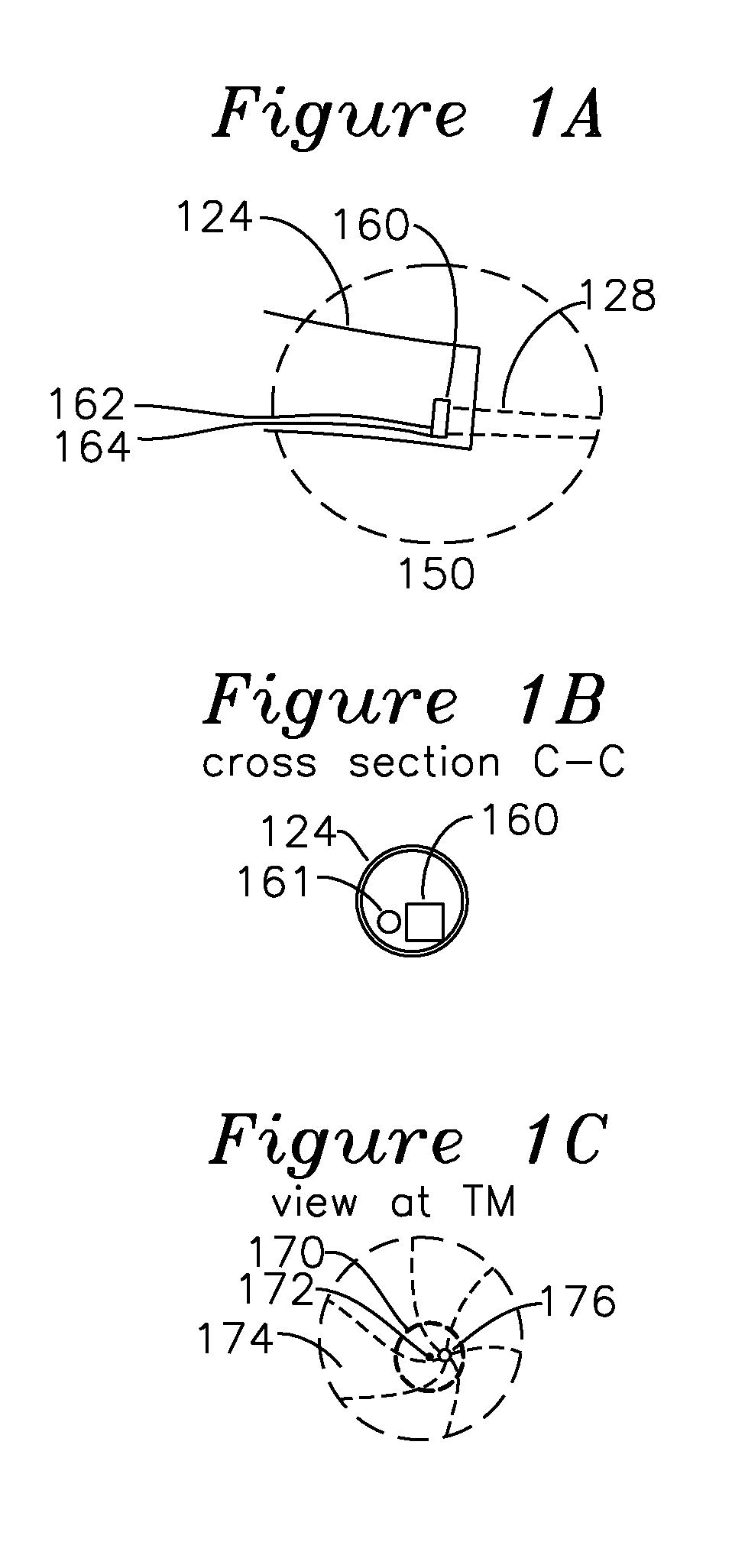Apparatus and Method for Characterization of Acute Otitis Media
a technology of otitis media and appendix, which is applied in the field of devices for the detection of middle ear effusion, can solve the problems of delayed speech and language skills development, no one can achieve the diagnostic accuracy of invasive myringotomy and tympanocentisis, and the overall likelihood of obtaining an accurate diagnosis using any of the non-invasive methods is no better than 50%, so as to achieve the effect of determining the viscosity
- Summary
- Abstract
- Description
- Claims
- Application Information
AI Technical Summary
Benefits of technology
Problems solved by technology
Method used
Image
Examples
Embodiment Construction
[0044]FIG. 1 shows a signal processor for an example embodiment of a tympanic membrane characterization system. Region 150 (shown in magnified view FIG. 1A) includes a cross section view of a middle ear and tympanic membrane 130 of a subject being examined. The tympanic membrane 130 is interrogated by an ultrasound beam 128 from an ultrasound transducer 160 (shown in FIG. 1A) which is optionally mounted on the inner surface of a speculum tip 124, and is detachable from an otoscope speculum mounting adapter 126. In one embodiment of the invention, an optical source 161 seen in the FIG. 1B cross section view of FIG. 1A, generates a visual indication the region of insonification by the ultrasound by illumination of a target or region of the tympanic membrane within the ear canal, as seen in FIG. 1C. FIG. 1C shows the view of the tympanic membrane as seen through the speculum, including the tympanic membrane 174, “cone of light”176, which is a reflective region of the TM which is normal...
PUM
 Login to View More
Login to View More Abstract
Description
Claims
Application Information
 Login to View More
Login to View More - R&D
- Intellectual Property
- Life Sciences
- Materials
- Tech Scout
- Unparalleled Data Quality
- Higher Quality Content
- 60% Fewer Hallucinations
Browse by: Latest US Patents, China's latest patents, Technical Efficacy Thesaurus, Application Domain, Technology Topic, Popular Technical Reports.
© 2025 PatSnap. All rights reserved.Legal|Privacy policy|Modern Slavery Act Transparency Statement|Sitemap|About US| Contact US: help@patsnap.com



